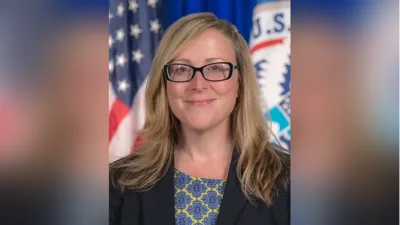Kansas Geological Survey to Measure Groundwater Levels in Western Kansas
Kansas Geological Survey to Measure Groundwater Levels in Western Kansas
A crew from the Kansas Geological Survey, based at the University of Kansas, will be in western Kansas measuring groundwater levels the first week of January.
Levels are measured annually as part of a joint project conducted by KGS and the Kansas Department of Agriculture's Division of Water Resources (DWR) to monitor the health of the state's valuable groundwater resources.
Weather permitting, the KGS crew will be working near Colby on Jan. 3, Goodland on Jan. 4, Ulysses on Jan. 5 and Liberal on Jan. 6.
Most of the measured wells tap into the High Plains aquifer, a massive network of underground water-bearing rocks and the main source of water in the region. The rest draw from deeper aquifers or shallower alluvial aquifers along creeks and rivers.
Based on 2022 precipitation patterns and widespread drought conditions in western Kansas, Brownie Wilson, KGS water-data manager, expects this winter's measurements to show an overall decline.
“The lack of moisture across much of Kansas this past year is on par with what we saw in 2011 and 2012,” Wilson said. “Most of the High Plains aquifer region of Kansas has been under some level of drought condition since the start of the year, and that trend is continuing right into 2023. This has resulted in increased pumping demands that have stretched into the fall and early winter. As such, we are expecting water levels to be down across the state.”
The High Plains aquifer underlies portions of eight states. In Kansas, it encompasses three individual aquifers — the Ogallala aquifer, the Equus Beds around Wichita and Hutchinson, and the Great Bend Prairie aquifer around Pratt and Great Bend.
Groundwater levels in much of the state's portion of the Ogallala aquifer, especially in southwest Kansas, have been on the decline since water use started to rise in the mid-20th century. Dry years lead to increased water usage, primarily for irrigation, which in turn typically causes greater declines in water levels.
The KGS and DWR measure depth to water in more than 1,400 wells in 48 counties, primarily in January to avoid as much as possible skewed data associated with short-term declines caused by widespread pumping during the growing season. This year, KGS will measure 582 wells, and crews from the DWR's field offices in Garden City, Stafford and Stockton will measure 827.
Wells are accessed with landowners' permission, and many have been monitored for years, although new wells are added as older wells become inaccessible or to fill in spatial gaps in the monitoring network. The majority are within the boundaries of the state's five Groundwater Management Districts (GMDs), which are organized and governed by area landowners and water users to address local water-resource issues.
Historical annual measurements for each well are available on the KGS's website. Results of measurements made in January 2023 will be added in late February.
The University of Kansas is a major comprehensive research and teaching university. The university's mission is to lift students and society by educating leaders, building healthy communities and making discoveries that change the world. The KU News Service is the central public relations office for the Lawrence campus.
kunews@ku.edu | 1450 Jayhawk Blvd., Suite 37, Lawrence, KS 66045
Original source can be found here.




 Alerts Sign-up
Alerts Sign-up